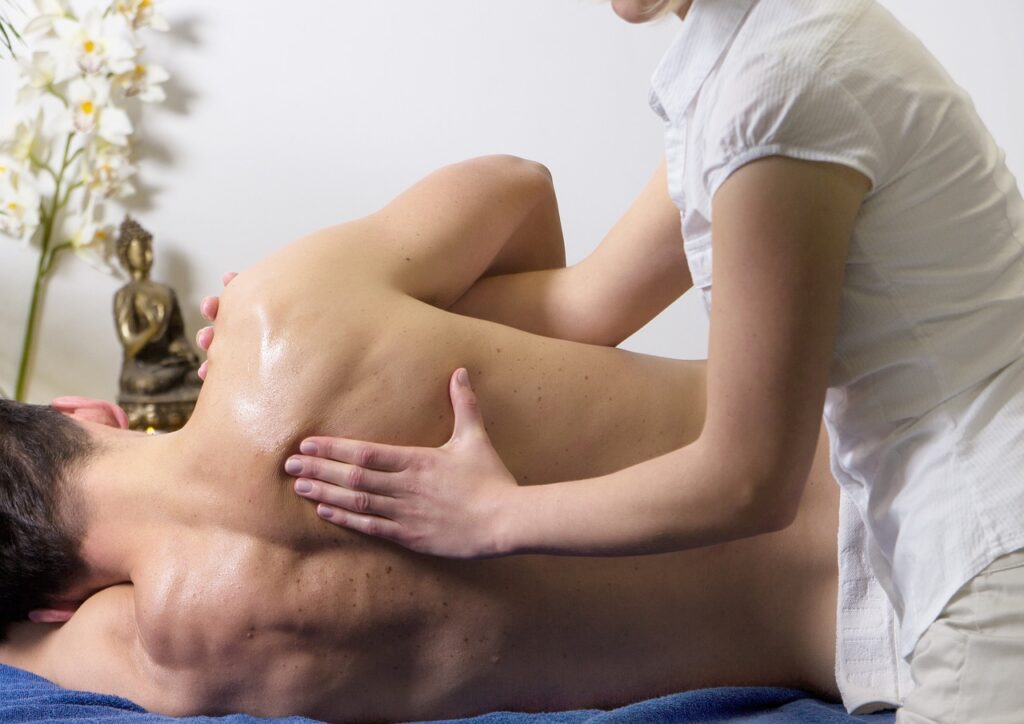After a rough week of deadlines, alarms, and doom-scrolling, your shoulders sit somewhere near your earlobes and your heart pounds like a drum solo. You book a 60-minute massage hoping to reboot everything at once. But can a single set of skilled hands switch off the body’s stress alarms? Let’s unpack the science and set realistic expectations.
“A massage is a conversation between two nervous systems.”
First, meet the primary stress messengers. Cortisol keeps you alert, but, in overdose, steals sleep and packs on belly fat. Adrenaline speeds heart rate and blood pressure, priming you to fight or flee. Norepinephrine sharpens focus yet tightens blood vessels. In small bursts, they’re lifesavers; in constant flow, they’re troublemakers.
When danger passes, the parasympathetic nervous system should slow the show, lowering heart rate, deepening breaths, and telling cortisol to stand down. Chronic stress, however, glues the “on” switch. Muscles stay rigid, digestion stalls, and the mind spins like a hamster wheel.
Enter massage. Moderate, rhythmic pressure activates pressure receptors in skin and fascia. Signals travel up the vagus nerve, the body’s chief relaxation highway, straight to the brainstem. The brain replies by releasing acetylcholine, which dilates blood vessels and drops heart rate—an internal “all clear.”
“Touch can do what willpower and coffee breaks can’t.”
Multiple studies back this up. A 2010 Cedars-Sinai trial showed a single 45-minute Swedish massage cut cortisol levels by 31% and boosted white blood cells by almost the same rate. Other research finds a 16-point drop in systolic blood pressure after just one session.
Chemically, massage lowers cortisol while raising serotonin and dopamine; neurotransmitters stabilise moods and spark motivation. Less cortisol means your immune system can shift from defence to repair mode, patching tissues and balancing hormones.
“Lowering cortisol is like turning down the background noise of life.”
Adrenaline also quiets. As parasympathetic tone rises, heart rate slows, blood pressure falls, and breathing deepens. The body senses safety and reallocates energy from survival to digestion, reproduction, and cellular cleanup.
So, does one massage reset you forever? Not exactly. Think of it as restarting a glitchy computer; the screen clears, and programs run smoother, but bad habits can still crash the system again. One session offers a chemical snapshot of calm that may last hours to days, depending on sleep, diet, and ongoing stress.
“A single reboot helps, but regular updates prevent future freezes.”
Take Mia, a high-school teacher juggling exams and toddlers. Her first massage slashed her pulse from 92 to 68 beats per minute and left her “floating.” Yet by Friday, traffic jams and grading papers nudged cortisol upward again. Scheduling biweekly sessions, plus nightly breathing drills, kept her readings steadily lower.
Want to stretch the benefit of your appointment?
- Arrive five minutes early and park your phone.
- Breathe in for four, out for six during the first strokes; this pairs your breath with the therapist’s rhythm.
- Scan your muscles, releasing clenched jaws or fists whenever you notice them.
After the table, keep the vagus nerve humming. Sip water, stroll, and avoid loud music for an hour. At bedtime, place one hand on your belly, inhale deeply, and recall the sensation of the therapist’s strokes. This mental replay reactivates relaxation pathways and blunts the return of cortisol.
“Post-massage habits decide whether the calm sticks or slips.”
If chronic anxiety, insomnia, or high blood pressure are daily visitors, plan a series of weekly sessions for a month, then taper. Regular sessions reinforce neural networks, favouring parasympathetic dominance, turning an occasional treat into preventive medicine.
Bottom line: One good massage can press a chemical reset button, lowering stress hormones and raising feel-good ones in one hour. The effect is powerful but temporary, like sunshine after rain. Keep inviting touch—through professional therapy, self-massage, or even mindful hugs—and that reset won’t just be a moment; it will become your new default setting.

